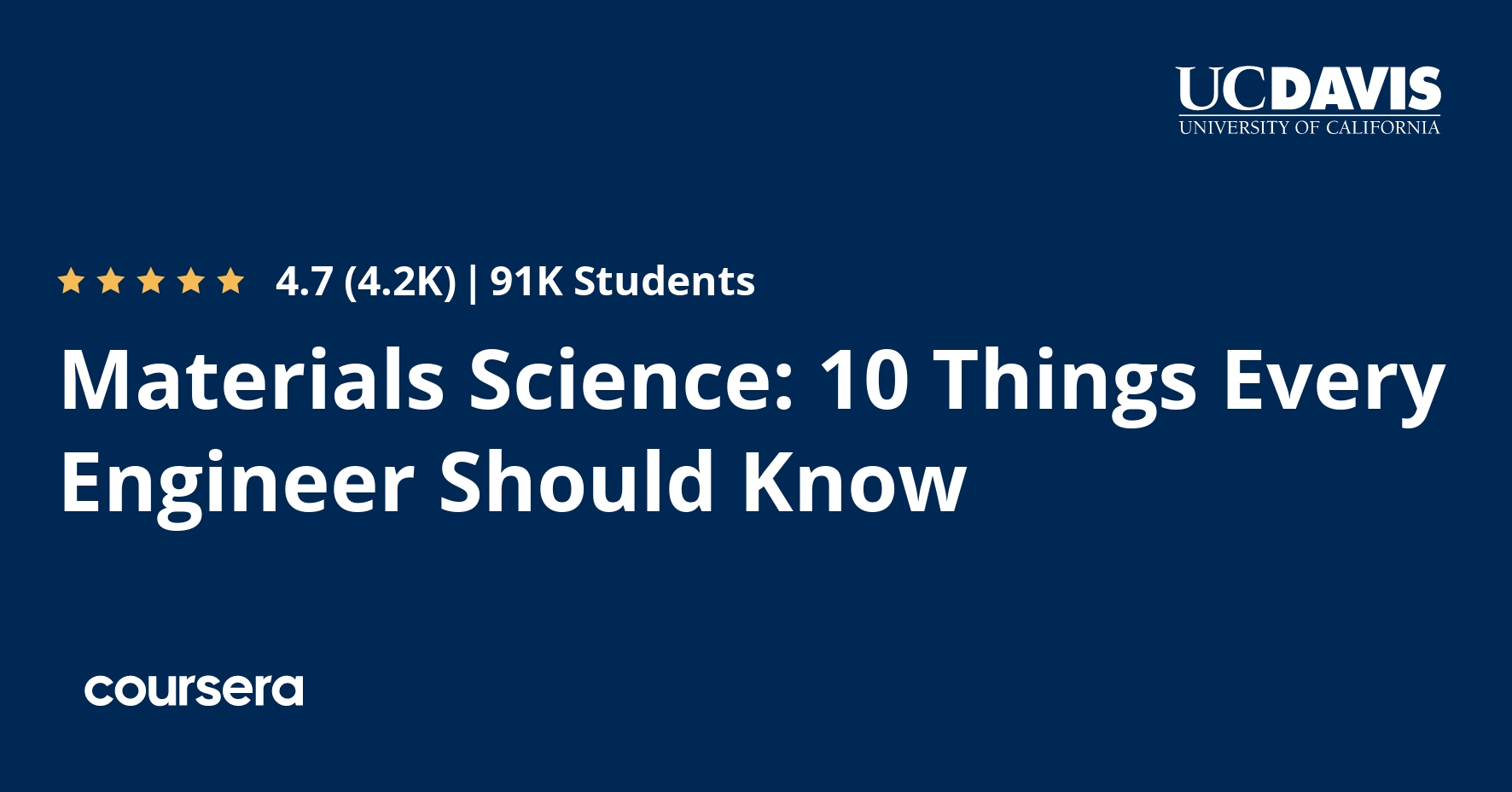Description
We explore “10 things” that range from the menu of materials available to engineers in their profession to the many mechanical and electrical properties of materials important to their use in various engineering fields. We also discuss the principles behind the manufacturing of those materials.
By the end of the course, you will be able to:
* Recognize the important aspects of the materials used in modern engineering applications,
* Explain the underlying principle of materials science: “structure leads to properties,”
* Identify the role of thermally activated processes in many of these important “things” – as illustrated by the Arrhenius relationship.
* Relate each of these topics to issues that have arisen (or potentially could arise) in your life and work.
If you would like to explore the topic in more depth you may purchase Dr. Shackelford’s Textbook:
J.F. Shackelford, Introduction to Materials Science for Engineers, Eighth Edition, Pearson Prentice-Hall, Upper
Saddle River, NJ, 2015
What you will learn
Course Overview / The Menu of Materials / Point Defects Explain Solid State Diffusion
Welcome to week 1! In lesson one, you will learn to recognize the six categories of engineering materials through examples from everyday life, and we’ll discuss how the structure of those materials leads to their properties. Lesson two explores how point defects explain solid state diffusion. We will illustrate crystallography – the atomic-scale arrangement of atoms that we can see with the electron microscope. We will also describe the Arrhenius Relationship, and apply it to the number of vacancies in a crystal. We’ll finish by discussing how point defects facilitate solid state diffusion, and applying the Arrhenius Relationship to solid state diffusion.
Dislocations Explain Plastic Deformation / Stress vs. Strain -The “Big Four” Mechanical Properties
Welcome to week 2! In lesson three we will discover how dislocations at the atomic-level structure of materials explain plastic (permanent) deformation. You will learn to define a linear defect and see how materials deform through dislocation motion. Lesson four compares stress versus strain, and introduces the “Big Four” mechanical properties of elasticity, yield strength, tensile strength, and ductility. You’ll assess what happens beyond the tensile strength of an object. And you’ll learn about a fifth important property – toughness.
Creep Deformation / The Ductile-to-Brittle Transition
Welcome to week 3! In lesson five we’ll explore creep deformation and learn to analyze a creep curve. We’ll apply the Arrhenius Relationship to creep deformation and identify the mechanisms of creep deformation. In lesson six we find that the phenomenon of ductile-to-brittle transition is related to a particular crystal structure (the body-centered cubic). We’ll also learn to plot the ductile-to-brittle transition for further analysis.
Fracture Toughness / Fatigue
Welcome to week 4! In lesson seven we will examine the concept of critical flaws. We’ll define fracture toughness and critical flaw size with the design plot. We’ll also distinguish how we break things in good and bad ways. Lesson eight explores the concept of fatigue in engineering materials. We’ll define fatigue and examine the fatigue curve and fatigue strength. We’ll also identify mechanisms of fatigue.





